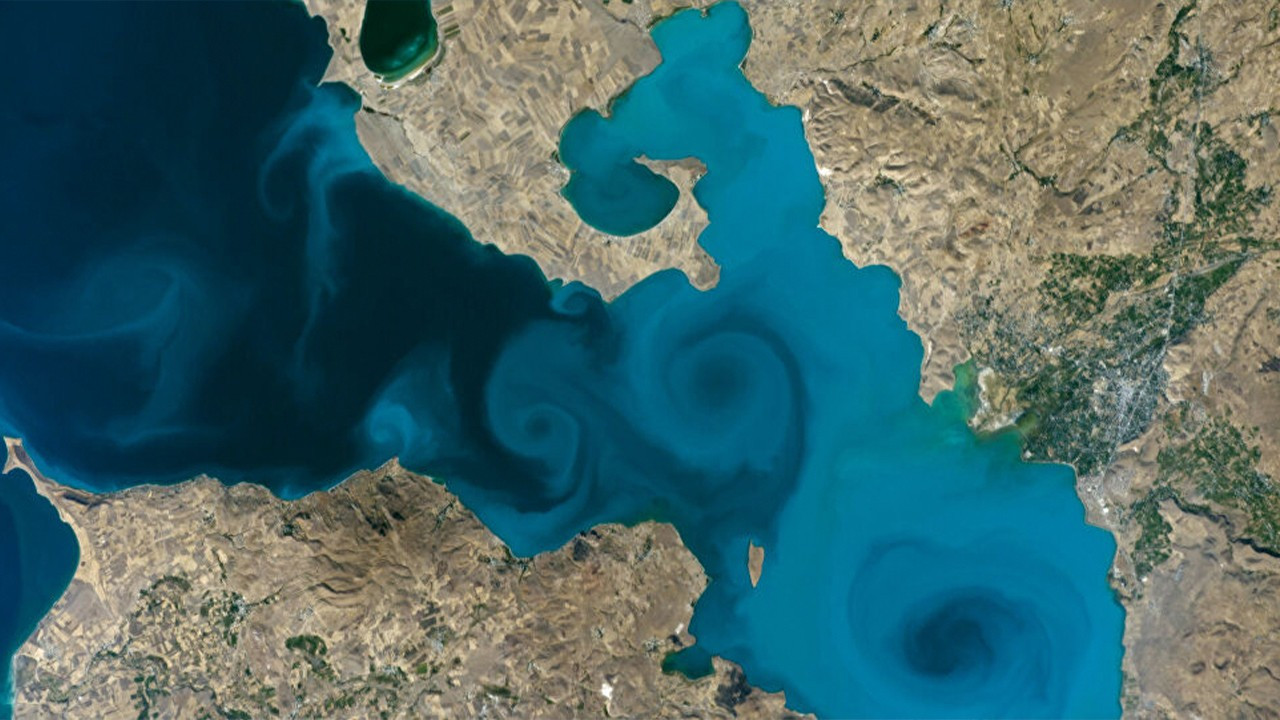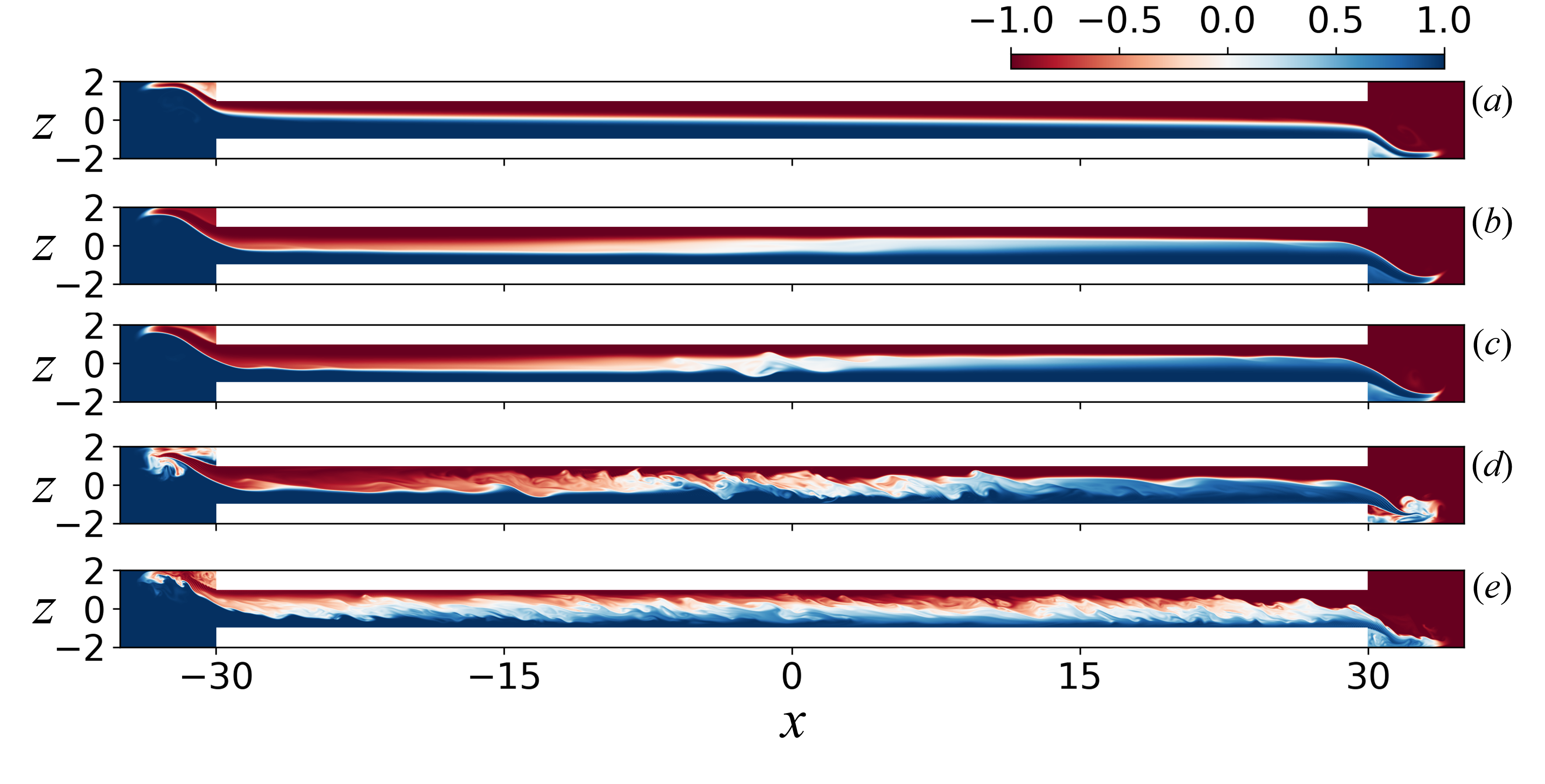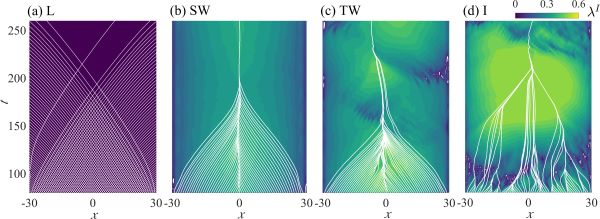Research - Mixing in Estuaries and Straits

Mixing in Estuaries and Straits
In estuaries and straits, stably stratified exchange flows occur when two fluid layers of differing densities interact, with the denser layer settling below the lighter one due to gravitational forces, forming a stable density gradient. This layered stratification is critical for understanding fluid dynamics in natural and engineered systems, such as estuarine environments, building ventilation, and climate mitigation. Notably, estuaries and straits function as geophysical boundary layers, where distinct water masses meet and mix, forming localized gradients in salinity, temperature, and density. These gradients drive important mixing and transport processes, which regulate the movement of nutrients, sediments, and pollutants and impact broader geophysical systems.
A key model for studying such flows is the Stratified Inclined Duct (SID), where an exchange flow is sustained within a long, gently sloping duct. The SID model replicates continuously forced density-stratified flows commonly found in estuarine systems, providing insights into wave dynamics and transitions to turbulence.
Dynamics of Stratified Flow and Transition to Turbulence
Experiments in SID reveal that as the duct’s tilt angle increases, interfacial waves emerge and ultimately transition into turbulence, closely linked to a threshold in the exchange flow rate, as predicted by inviscid two-layer hydraulic theory. To explore these hydraulic mechanisms, recent studies use:
- Direct numerical simulations (DNS) to obtain comprehensive flow data across key regimes,
- Two-layer averaging of these simulations, and
- Inviscid two-layer shallow-water and instability models for analyzing interfacial wave behaviors.
In stable conditions, the flow is subcritical, laminar, and controlled at the duct’s boundaries. However, as tilt increases, the flow transitions to a supercritical state, becoming unstable and vulnerable to long-wave instabilities, progressing from stationary waves to wave breaking and intermittent turbulence at larger tilt angles.
The SID setup illustrates how coherent structures—organized regions within turbulent flows—arise amidst apparent randomness, driving energy transfer and mixing processes. In turbulent flows, these structures often appear as vortices, shear layers, and wave patterns, which enhance mixing by increasing the surface area over which diffusion occurs.
Coherent Structures and Turbulent Mixing in Stratified Flows
Coherent structures are essential in turbulent mixing as they organize chaotic motions and drive mixing efficiency across a wide range of scales. For example, vortices maintain rotational coherence from large to small scales, while shear layers, characterized by steep velocity gradients, can roll up into vortices due to instabilities. Kelvin-Helmholtz waves often develop across shear layers, and Tollmien-Schlichting waves emerge in boundary layers, further contributing to mixing. These structures, though intermittent, persist across flow regimes and can merge, split, and dissipate, enabling energy transfer from larger scales down to smaller dissipative scales.
The characteristics of coherent structures—intermittency, variability in scale, and persistence—have profound implications for mixing in stratified flows. Vortices, for instance, enhance mixing by stretching and folding scalar fields like temperature and concentration, creating extensive interfaces for diffusion. Understanding these structures improves predictions of mixing rates and patterns, such as pollutant dispersion, by capturing coherent dynamics within turbulence models like Large Eddy Simulation (LES) and Direct Numerical Simulation (DNS).
Practical Applications
This understanding of stratified flow dynamics and coherent structures has broad applications:
-
Estuarine and Coastal Management: Enhanced predictions of pollutant and nutrient dispersion in estuarine and coastal environments aid in ecological management. Accurate predictions of mixing rates are especially important for mitigating saltwater intrusion into freshwater sources and managing flooding events. In these scenarios, the rate at which saltwater mixes with freshwater determines the extent of intrusion and affects the salinity levels that can impact ecosystems, agriculture, and drinking water supplies.
-
Environmental Engineering: Insights into mixing processes are essential for environmental monitoring, especially for predicting the behavior of pollutants and nutrients in natural waters and the atmosphere.
Overall, the study of mixing in stratified estuarine and coastal flows, coupled with the influence of coherent turbulent structures, provides a comprehensive framework for addressing complex environmental and industrial challenges, advancing predictive capabilities in both natural and engineered systems.

